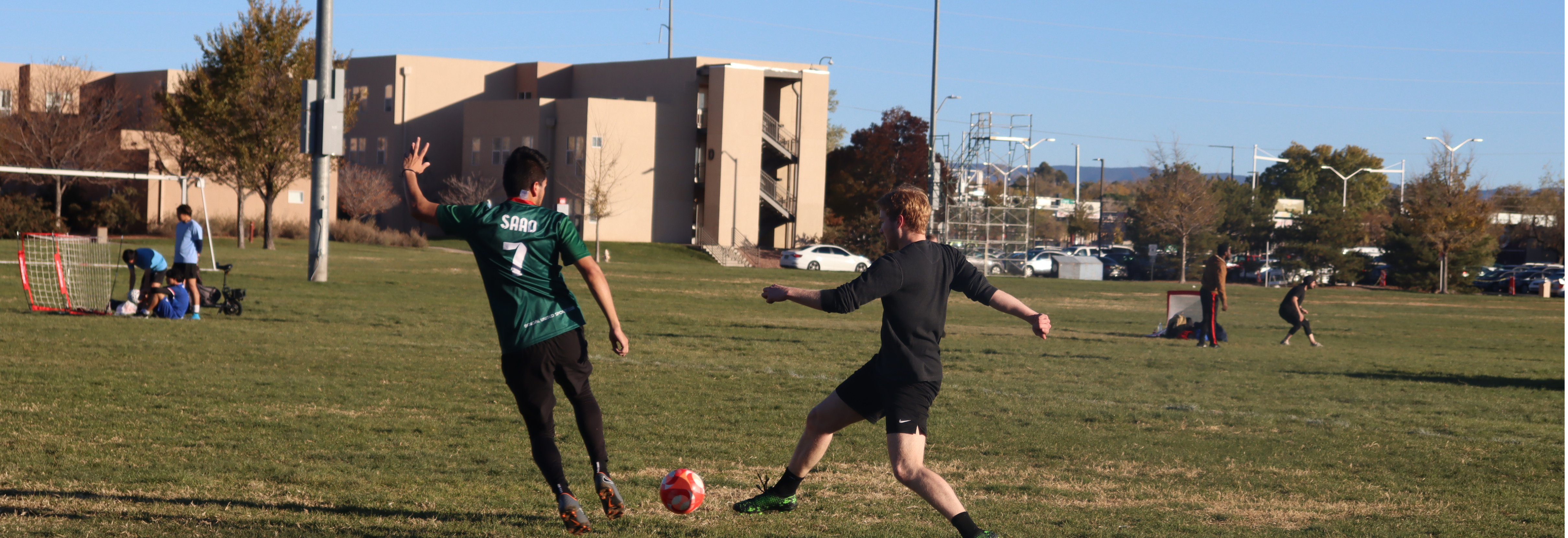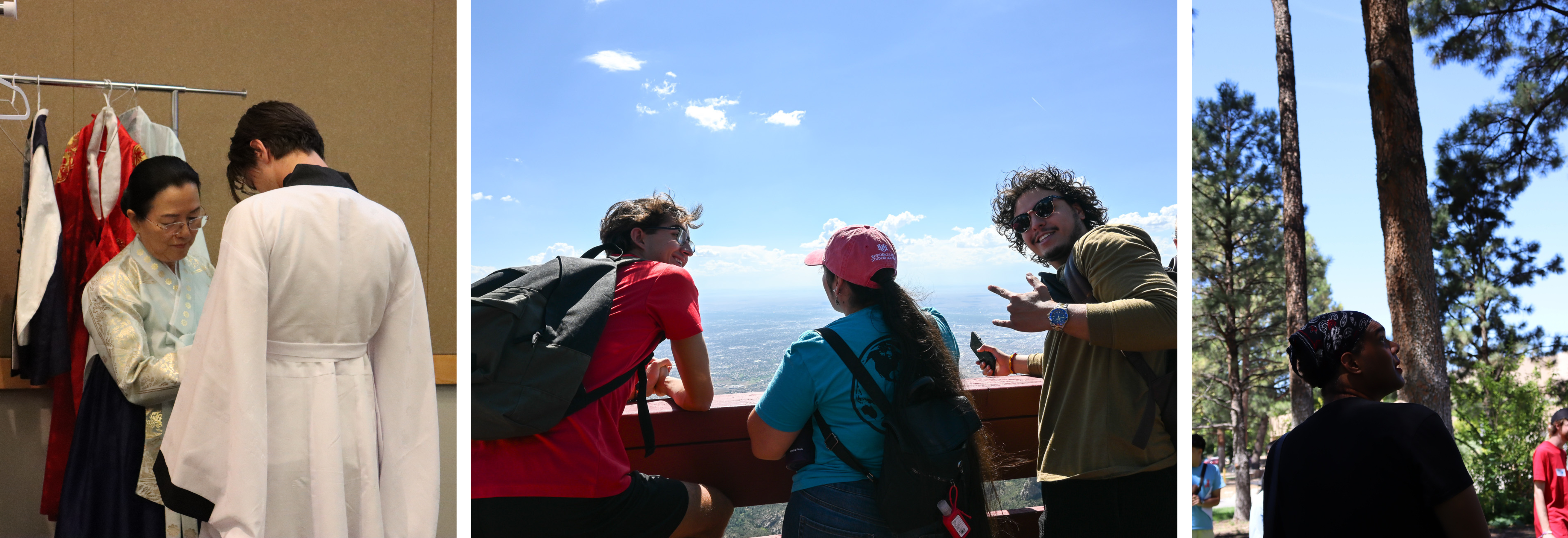Documents Required
International students are normally admitted to the US for "Duration of Status" (D/S).This means that they are allowed to remain in the US for as long as they "maintain legal student status," NOT for the length of time listed on their visa or I-20/DS-2019 form.The information below lists the documents that students MUST have while they are residing in the US to remain legally present. Students should make copies of each of these documents and keep them in a safe place separate from the originals in case they are lost or stolen.
Passport
- Must be valid for 6 months into the future upon entry into the US, to work in the US and should remain valid at all times during student's stay.
- If a student has been issued a Travel Document in Lieu of a Passport by the government of the country of which they are a resident, the information above, regarding passports, applies to Travel Documents.
I-20 & DS-2019 - "Certificate of Eligibility”
- To enter the US and each time students travel abroad and return, they must present their I-20 (for F-1 students) or DS-2019 (for J-1 students) to the immigration officials at the port of entry.
- For most UNM students, the I-20 or DS-2019 is issued by the university through the Office of International Admissions or the Global Education Office (GEO). Some J-1 students have documents issued by an outside agency.
- Students should keep all of these and any other immigration documents for your records even if they get new ones in the future.
NOTE: If any of the information on these documents changes, students must come to GEO immediately to apply for a new document. Note that the expiration date on the I-20 or DS-2019 is just an estimate. For F-1 students, permission to stay in the US ends 60 days from the date they complete the last requirement for their degree. For J-1 students, permission to stay ends within 30 days of completion of the last requirement. If students fail to follow all the rules of legal student status, their stay expires on the day the violation of status occurs.
I-94 Departure Record
- This is the document that authorizes non-immigrants to be in the US as a student (F-1 or J-1) for a specified period of time, for the specified program of study, at the institution specified on the I-20/DS-2019.
- After entering the U.S., the I-94 can be accessed and printed anytime at the I-94 website by selecting "GET MOST RECENT I-94" and entering passport information.
- In addition to the class of admission (e.g., F-1 or J-1), the I-94 contains the date of entrance into the U.S. and the date of expiration of permission to stay.
- For F-1 and J-1 visa holders, the expiration date should be written as "D/S" (duration of status), which implies the date of program completion (not always the same date as graduation).
- The I-94 must be presented when applying for a Social Security number and a driver’s license or state ID. Each time students re-enter the US, they should print a new I-94.
NOTE: If students fail to follow all the rules of legal student status, their stay expires on the day the violation occurs, even if their I-94 and I-20 or DS-2019 are still valid.
Entry visa
- Only Canadian citizens do not need a visa to enter the U.S.
- Students must present a valid SEVIS form I-20 or DS-2019 from the school they will attend to the U.S. Consular officer to obtain their entry visa.
- The visa may expire while a student is in the US; they cannot renew it in the U.S. and do not need to renew it while they are here (it is permissible to be in the U.S. on an expired visa); however, a new entry visa will be required if the original expires and they travel out of the U.S. and then wish to re-enter.
- Students may be able to travel to and return from Canada, Mexico, and adjacent islands (except Cuba) without a valid visa if they will be staying there less than 30 days (check with a GEO advisor for current regulations).
NOTE: The visa does not indicate how long students are permitted to stay in the U.S. Permission to stay ends once a student completes their program of study (plus grace period) or when they fail to “maintain legal student status.”
Rules for Status
ALWAYS
- Attend the school whose name appears on the I-20 or DS-2019 - in some cases, the DS-2019 may be from a different organization.
- Provide an updated local address within 10 days of any change (notify GEO in person or via email and we notify DHS).
- Maintain registration as a full-time student throughout every Fall and Spring semester. Summer is considered students' annual vacation unless they begin their program in summer. International students must COMPLETE each semester with a full-time course load. Full-time means:
Undergraduate students = 12 credit hours minimum to keep legal student status (15 credit hours to keep an Amigo scholarship).Graduate students: 9 credit hours minimum (or 6 credits with an assistantship). - Keep the "certificate of eligibility" (I-20 or DS-2019 form) correct and valid at all times and apply for extensions of stay at least one month before the document expires; see an advisor for a new I-20/DS-2019 if any information changes.
- Maintain a valid passport throughout one's stay in the US. A passport must be valid for six months into the future to enter the US, and students must bring updated passports to GEO immediately so that the new information can be reported.
- Complete necessary "immigration transfer procedures" if changing from one school to another in the US (even if a student completed the program at the prior school); contact an international advisor for details.
- Observe the “grace period” upon completion of studies. Students in F-1 status have 60 days and students in J-1 status have 30 days from the end of their program to do one of the following things:
- Leave the US, or
- Get a new I-20 or DS-2019 for a new program or school and enroll in the next available semester, or
- Apply for off-campus work authorization (OPT for F-1, Academic training for J-1). Because of application deadlines and other restrictions, students wanting to apply must speak with a GEO advisor before completing their programs in order to get this benefit, or
- Apply for a change to another immigration status.
NEVER
- WORK OFF CAMPUS without written authorization from an international advisor in advance (all off-campus work authorizations must appear on the I-20 or DS-2019 form).
- WORK ON CAMPUS more than 20 hours per week while school is in session during the Fall and Spring semesters.
- Take a leave of absence, withdraw from classes, or drop below the required number of credits without FIRST checking with an international advisor in GEO; students who terminate their program or otherwise fall out of legal status before completing do not have a grace period to leave the US, they must leave immediately!
NOTE: NO STUDENT may drop below their minimum number of credits except under extremely limited circumstances that must be authorized in advance by an international student advisor. Grades that do NOT count toward the full-time minimum include:
- W, WP, or WF: These grades are “withdrawals” and will be assigned by professors if students do not attend class.
- Grade option of Audit: This is a non-graded course which allows students to sit in on the class without doing the work.
- More than 3 credit hours of online courses; while students are permitted to take more online courses, only 3 credits can be counted toward full-time.
Other Legal Requirements
- Once a student has completed or terminated their program, or have failed to “maintain legal student status,” they can no longer legally enter the U.S. with their I-20 or DS-2019 form, and the staff of GEO can no longer sign those forms. (This means that students should NOT plan to travel out of and return to the U.S. with their current I-20/DS-2019 after they have finished their program).
- All international students are required to complete and submit U.S. tax forms to the federal government every year regardless of whether or not they earned any money in the U.S.
- All students are required by UNM policy to have health insurance that covers them during their stay. J-1 students are also required by the US federal government to have health insurance that meets specific requirements.
Extending Documents
The "certificate of eligibility" (I-20 or DS-2019 form) must be kept correct and valid at all times. Students must apply for extensions of stay at least one month before the document expires.
Conditions and Limitations
Students may apply for an extension of their I-20/DS-2019 if:
- The expected program end date on the I-20 or DS-2019 has not passed,
- They have continuously maintained lawful F-1 or J-1 student status, and
- The delay was caused by compelling medical or academic reasons (e.g. change of major or research topic, or unexpected research problems).
Delays caused by academic probation or suspension are not permitted reasons.
If a student does not meet the requirements for an extension listed above, they may need to apply for "reinstatement" to lawful F-1 or J-1 status. In this case, immediate consultation with the international advisor is necessary.
How to Apply for an Extension
Read and complete the extension paperwork from this handout.
Applicants will need to complete the student section (Section A) and their academic advisor will need to complete and sign the advisor section (Section B). Students will upload this form under the upload documents section in https://myGEO.unm.edu.
Proof of Financial Support
Applicants must provide proof of financial support to cover the remaining time they will need to complete their program or one year, whichever is longer. Students will upload this financial proof in the upload documents section in https://myGEO.unm.edu
Funding amounts for grads.
Funding amounts for undergrads.
If a student needs fewer than full-time hours to complete their program, they only need to show tuition for the credits they need to complete. They also need to show approximately $1,300 per month for living expenses.
*For example, a PhD student who has completed all requirements except the dissertation would need to show only $700 per semester in tuition (cost of 6 dissertation hours) plus living expenses for each month of the extension. If they have dependents, they will need to show additional living expenses for them ($6,000 for a spouse, $4,000 for each child).
For financial proof, they may use personal funds, such as a bank statement or their current assistantship contract (they can use this ONLY if their advisor indicates that their assistantship will continue on page 2 of the extension form). If they have funds from another source, GEO will need a letter of support from that source, as well as supporting financial documents, such as bank letters or salary statements showing that the funds are available.
GEO will notify you by email when the new I-20/DS-2019 is ready.
If a student is working on-campus, their employer will want to see their updated I-20/DS-2019 with the extended completion date. For assistantships, they must give it to Graduate Studies (Humanities Bldg, Room 107). For UNM Student Employment, they must give it to the Student Employment Office.
REMEMBER! Students should keep ALL I-20s/DS-2019s given to them during their studies.
They may need them if they apply for any future immigration benefits.
Changing Status
Changing Immigration Status to F-1 or J-1 Students Status Reasons You May Need to Change Status
Under US immigration law, you must be in the immigration status that matches your primary purpose for being in the US. Here are specific reasons why you might need to change your status:
- Change in primary purpose: If you entered the US for one purpose (such as working on H-1B or being an F-2 dependent) but now want to study full-time, your immigration status must change accordingly.
- Study restrictions with current status: F-2 visa holders CANNOT study full-time in degree programs without first changing status. B1/B2 visitors are completely prohibited from studying full-time or enrolling in degree programs.
- Dependent status issues: If you are on a dependent visa (F-2, J-2, H-4) and the principal visa holder leaves the US or changes their status, you must either leave or change your own status BEFORE continuing your studies.
- Age limitations: If you are a dependent approaching 21 years old, you cannot remain on a dependent visa past your 21st birthday. Your change of status application must be approved before this date.
- Employment benefits: To receive benefits specific to student status (such as on-campus jobs, assistantships, or practical training work authorization), your status change must be approved first. For some benefits, you must have been enrolled full-time for at least 9 months.
Two ways to change immigration status
Option 1: Leave and Re-enter the US
This involves:- Leaving the US
- Applying for a new entry visa at a US consulate abroad
- Re-entering with the new visa
Important: Do NOT choose this option if you have:
- Ever violated your immigration status terms
- Filed an application for permanent residency
If neither applies to you, this is currently the fastest and most reliable way to change status.
Option 2: File for Change of Status within the US
This involves:- Filing Form I-539 with USCIS while legally present in the US
- Waiting for approval (currently taking about 6 months)
- Receiving a change in status, but NOT a new visa
Note: You must meet with an international advisor or immigration attorney to determine if this option will work for your situation.
Important Conditions & Limitations
- Legal presence requirement: You must be in the US legally when you apply AND be able to maintain that status until the change is approved.
- Enrollment timing: When USCIS reviews your application, you must be able to enroll as a full-time student within the next 30 days, or your application will be denied.
- B-visitor restrictions: If changing from B-visitor status, you must wait until your change is approved before beginning any degree program. You can only take part-time avocational courses while waiting. B-visitors are often denied changes to F-1/J-1.
- F-2 dependent restrictions: If changing from F-2 status, you cannot enroll full-time until your change is approved.
- J-visa restrictions: If you were previously in J-1/J-2 status with a two-year home residency requirement, you may be ineligible to change status within the US.
- Research Scholar restrictions: J-visa holders wanting to change to J-1 Research Scholar/Professor category may face the "12-month bar" restriction if they've been in any J status during the previous 12 months.
Application Process
STEP 1: Be Informed
Read all information carefully and consult with an international advisor BEFORE applying. The advisor can help you understand current processing times and whether you should apply within the US or travel abroad for a new visa. For more in-depth details, review this handout.
STEP 2: Request Required Documents
After being fully admitted to your program and providing proof of financial support:
- For F-1 status: Request an I-20 form
- For J-1 status: Request a DS-2019 form
STEP 3: Pay the SEVIS fee
- Required for changing to F-1 or J-1 (not required for F-2 or J-2)
- Pay using the SEVIS number on your I-20 or DS-2019
- Payment options:
- Online at with a credit card
- Through Western Union Quick Pay in local currency
- By mail with a form and check/money order from a US bank
- Print the payment receipt to include with your application
STEP 4: Begin Your Online Application
- Create an account at www.uscis.gov
- Select "File a form online" and choose Form I-539
- Complete all questions carefully (consider having an advisor review it)
- Use an address where you can receive mail for at least one year
Guidance for confusing questions:
- "Were you granted Duration of Status?" Answer "Yes" if your I-94 says "D/S"; "No" if it has a specific date
- "When does your status expire?" Enter the end date on your I-94, or if it says "D/S," enter the end date on your current status document
- "Effective date of change?" Enter the start date on your new I-20/DS-2019
- "Status extended until date?" Enter the end date on your new I-20/DS-2019
- "Additional Information" section: Explain why you're applying and how you'll use your education upon returning home
STEP 5: Prepare Documents to Upload (PDF format)
- Current I-94 (print from i94.cbp.dhs.gov if electronic)
- New I-20 or DS-2019 signed by you on page 1
- Financial documentation showing ability to pay for:
- All tuition and fees
- Health insurance
- Living expenses
- Personal bank statements
- Scholarship/assistantship letters from your department
- Support letters from sponsors with their bank statements
- Cover letter explaining:
- What status change you're requesting
- Why you need this change
- How you've supported yourself in your current status
- How you'll use your education in your home country after completion
- Current immigration documents:
- Passport identity page
- Current visa
- Previous I-20s or DS-2019s (if applicable)
- SEVIS fee payment receipt
- If changing from dependent status (F-2, J-2, H-4), also include:
- Principal visa holder's I-94
- Principal's passport and visa
- Principal's status documents (I-20, DS-2019, etc.)
- Marriage certificate (if spouse is principal) or birth certificate (if parent is principal)
STEP 6: Submit Application and Pay Fee
- $420 application fee
- $85 biometric services fee may be charged (currently suspended)
- Optional: $1,965 premium processing fee (reduces processing to 30 days
After Submission: What to Expect
- Receipt Notice: You'll receive a "Notice of Action" (Form I-797C) within about 6 weeks. This includes a receipt number to track your application status online.
- Biometrics Appointment: USCIS may require you to visit a local office to have your fingerprints, photo, and signature taken.
- Possible Request for Evidence (RFE): If your I-20/DS-2019 start date passes while your application is pending, USCIS will likely request a new document with an updated date. Contact your international office immediately to request this.
- Regular Status Updates: For F-1/J-1 applicants, your international office must regularly update your SEVIS record to keep it active while your application processes. Ask them about their procedures for this.
- Decision:
- If approved: You'll receive a new I-94 showing your new status and "D/S" (Duration of Status) as the end date
- If denied: You may have limited time to leave the US (contact an advisor immediately)
Critical Reminders
- No early benefits: You cannot accept any benefits of the new status (like on-campus employment) until your change is approved.
- Timing matters: Start the process as early as possible, as processing times are currently 6 months.
- Status transition: Once your new status is approved, you can no longer perform activities allowed by your old status if they're prohibited under your new status.
- Registration requirement: If changing to F-1/J-1 at UNM, you MUST contact the international office immediately after approval so they can register you in SEVIS.
- Visa vs. Status: This process changes your status but NOT your visa. The next time you travel internationally, you'll need to apply for a new visa stamp at a US consulate to re-enter in your new status.
Processing Times and Alternatives
- Current processing: Approximately 6 months
- If you need faster approval, consider:
- Leaving the US to apply for a new visa (Option 1 above)
- Adding premium processing ($1,965 extra) for 30-day processing
- You can add premium processing later if your application is taking too long
Reinstatement
Violations
Violations of F-1 status may include but are not limited to:
- Dropping below full-time enrollment without prior approval from an international advisor.
- Failure to complete an immigration transfer in a timely manner, or engaging in illegal employment.
Need Help?
- Read this page thoroughly and then make an appointment to see an international advisor at GEO immediately to discuss your options for regaining lawful immigration status.
- GEO can help you apply to regain legal immigration status so that you can enjoy all of the benefits of being an F-1 student in the U.S.
NOTE:
Once a student or scholar has violated their status, GEO can no longer sign their documents for travel, approve work authorization, or issue any letter or document on their behalf verifying their legal immigration status.
Conditions & Limitations
A student may be reinstated to F-1 status according to 8 CFR § 214.2(f) (16) (i) if:
The student has not been out of status for more than 5 months prior to filing the request for reinstatement (unless they can show that there were exceptional circumstances that prevented them from filing during the 5-month period immediately following the violation of status).
The student has not engaged in unauthorized employment.
The student does not have a record of repeated violations.
The student is currently pursuing or intends to pursue a full course of study in the next available term.
The student is not deportable on any grounds other than the status violation for which reinstatement is being requested.
The student establishes that the status violation resulted from either: a) circumstances beyond their control, or b) a reduction in course load that could have been authorized by an advisor and that failure to approve reinstatement would result in extreme hardship to them.
Alternatives to Reinstatement
If an individual is not eligible for reinstatement, or as an alternative to this process, they may have the option to regain legal status by leaving the U.S. and reentering the U.S. in a new period of initial F-1 status. A GEO International Advisor can discuss this option with them. Students who want to apply for off-campus work permission in the next year do not want to choose this option.
If an individual is going to exercise this option instead of applying for a reinstatement, they will need to get an Initial Form I-20 and pay the SEVIS I-901 fee again. They will also lose credit for any time accumulated towards qualification for benefits, such as optional or curricular practical training. If their visa is valid, they will not need a new visa if returning to the United States within 5 months of the exit date. Because they have a terminated record for failing to maintain status, they may be denied re-entry to the United States under section 212(a) (6)(G) of the Immigration and Nationality Act. So this alternative also has significant risks.
Consequences of Denial
The denial of a reinstatement application can have serious consequences, so applicants MUST understand these consequences before they choose to apply.
If an application is denied, the following can happen:
The applicant's visa will be canceled.
For the rest of their life, the individual may only apply for non-immigrant U.S. visas in their country of citizenship or legal permanent residence.
They will begin accumulating days of “unlawful presence” in the United States from the date of the denial. After 180 days of unlawful presence, they are subject to a 3-year bar from returning to the U.S. After one year of unlawful presence, the bar from entering the US is increased to 10 years.
Requirements while a Reinstatement is Pending
Applicants are required to maintain a full course of study while a reinstatement is pending, or, if they are just beginning studies at UNM, they are required to enroll in and maintain a full course of study during the first possible semester. If the reinstatement is denied, they must leave the U.S. immediately even if it means that they will forfeit tuition paid to UNM.
If an applicant is a continuing student at UNM and currently has on-campus employment (either an assistantship or student employment), they may not be able to continue in this employment and should speak with an international advisor for details.
Any authorized off-campus work is automatically canceled when an individual falls out of status; no further off-campus work can be authorized until the reinstatement is approved.
Out of Status for more than 5 months
If a student is out of status for more than 5 months from the date of the status violation, there is a presumption that the student is ineligible for reinstatement unless they can prove that there were exceptional circumstances that prevented filing within the 5-month period, and that they filed the request for reinstatement as soon as possible given those exceptional circumstances
Application Process
POTENTIAL APPLICANTS MUST MAKE AN APPOINTMENT TO MEET WITH A GEO ADVISOR BEFORE APPLYING FOR REINSTATEMENT.
STEP 1: Complete forms G-1145 and I-539 - These forms can be found at https://www.uscis.gov/files/form/g-1145.pdf and https://www.uscis.gov/i-539, respectively. Part 2 item 1 of the Form I-539 must indicate that the individual is applying for reinstatement. The word "REINSTATEMENT" should also be written in red ink at the top of the form to further distinguish it from other uses of Form I-539. Full instructions can be found at: https://www.uscis.gov/sites/default/files/document/forms/i-539instr.pdf. If the applicant has F-2 dependents, they should be included on the application using the form SUPPLEMENT-1. They should check with the advisor for which address to use if they will not be using a New Mexico address or if they might move while the application is in process.
STEP 2: An applicant must write a detailed letter explaining why they failed to maintain their legal F-1 status. Remember that they must convince USCIS that they fell out of status due to circumstances beyond their control, or that a reduction in course load could have been authorized by an advisor and that failure to approve reinstatement would result in extreme hardship to them. If they have been out of status for more than five months they must also convince USCIS that there were exceptional circumstances that prevented them from filing during the 5-month period immediately following the violation of status.
STEP 3: Applicants should bring proof of finances for the remainder of their program (bank statement or assistantship information), their passport, I-94, all previously issued I-20s, the completed I-539, G-1145 and letter of explanation to an appointment with a GEO international advisor. The advisor will review all of the options and consequences of applying for a reinstatement with them. If they decide to proceed with the reinstatement application, the advisor will print a reinstatement I-20, write a letter regarding the reinstatement, have them sign an acknowledgement of consequences, and ask them to return for a second appointment once they have assembled all of the necessary materials to send to USCIS.
STEP 4: The applicant must assemble all of the following items for the reinstatement application (in this order):
Check or money order payable to USCIS in the amount of $290,
Original I-94 (required),
Cover letter with explanation of why status violation was beyond their control and listing all of the items in the application (this list),
G-1145 completed with accurate information,
I-539 completed in full with “REINSTATEMENT” written in red letters across the top,
Advisor Letter,
Original NEW SEVIS I-20 marked “Reinstatement” in item 3,
Photocopies of passport and visa,
Photocopies of all previous I-20s,
Proof of sufficient funding for the program,
If they have not previously paid the SEVIS (I-901) fee, or if they have been out of status for longer than 5 months, they will be required to pay it and include a receipt of payment in this application. Information about this fee is available at: http://www.ice.gov/sevis/i901/index.htm (they can ask an advisor for details). They will need their SEVIS ID number and the UNM school code for this process (this information is on the Reinstatement I-20).
STEP 5: The applicant should make copies of the entire application packet and mail it via certified mail “return receipt requested” or express mail carrier (so that they have a receipt of filing) to:
US Mail and Certified Mail Address:
USCIS
PO Box 660166
Dallas, TX 75266
Express/ Courier Mail Address:
USCIS, Attn: I-539 for REINSTATEMENT
2501 South State Highway 121 Business
Suite 400
Lewisville, TX 75067
They should receive a text message and an email when the application is received with the G-1145. Within 4–6 weeks of sending the application to the USCIS, they should get a paper “notice of action” stating that USCIS has received the application. If they do not get this letter within 6 weeks of mailing their application, they should contact an advisor for more information. The case number in the top left corner of this receipt notice can be used to call or look on the USCIS websiteto check on their case. It can take 2-6 months before a decision is made by USCIS regarding their reinstatement and before they receive any notification.
STEP 6: If USCIS approves the reinstatement application, they will stamp the I-20 and return it to the applicant along with their I-797 Approval Notice. Once the applicant receives approval, they must bring these new documents to GEO. The GEO advisor will validate their record in the SEVIS system, copy their documents (the stamped I-20 and I-94) and can subsequently endorse their I-20 for travel or other student benefits.
A Note of Caution
If an individual is OUT OF STATUS they may not work on or off campus, including having research assistantships, graduate assistantships, or teaching assistantships.











